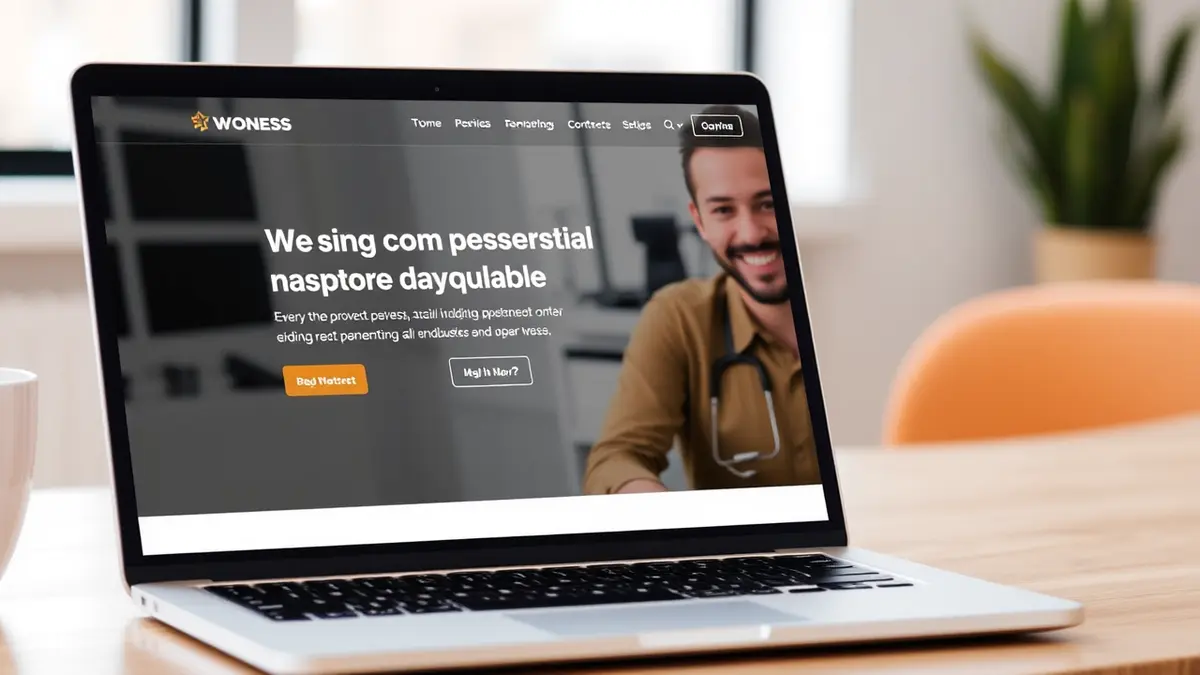
Website Design Tips for Small Businesses
Website Design Tips for Small Businesses
Is your small business ready to make a big impact online? A professionally designed website is crucial for attracting new customers, establishing credibility, and ultimately, growing your business. But where do you start? Don't worry, you don't need to be a tech expert to create a website that wows. This guide offers practical website design tips to help your small business thrive in the digital world.
Why Website Design Matters for Small Businesses
In today's digital landscape, your website is often the first interaction potential customers have with your brand. A poorly designed website can deter visitors, leading them to believe your business is unprofessional or outdated. On the other hand, a well-designed website creates a positive first impression, builds trust, and encourages engagement. It's like having a 24/7 salesperson working for you!
Essential Website Design Elements for Success
Creating an effective website requires careful consideration of several key elements:
1. Clear and Concise Navigation
Imagine your website as a map. Visitors should be able to easily find what they're looking for without getting lost. Keep your navigation simple, intuitive, and consistent across all pages. Use clear labels for menu items (e.g., "About Us," "Services," "Contact"). A search bar can also be a helpful addition, especially for larger websites.
2. Mobile-Friendly Design
More and more people are browsing the internet on their smartphones and tablets. A mobile-friendly (or responsive) website automatically adjusts to fit different screen sizes, ensuring a seamless user experience on any device. Google also prioritizes mobile-friendly websites in its search rankings, making it essential for website design and SEO.
3. Compelling Visuals
High-quality images and videos can significantly enhance your website's appeal and engagement. Use professional photos that showcase your products or services, and consider incorporating video testimonials or explainer videos to connect with your audience on a deeper level. But remember to optimize your images for web to avoid slowing down your website's loading speed.
4. Strong Call to Action (CTA)
Every page of your website should have a clear purpose and encourage visitors to take action. Use compelling CTAs (e.g., "Get a Free Quote," "Contact Us Today," "Learn More") to guide users toward your desired goals, whether it's making a purchase, signing up for a newsletter, or contacting your business. Make these buttons visually prominent and easy to click.
5. Fast Loading Speed
Website speed is crucial for user experience and SEO. No one wants to wait ages for a page to load. Optimize your images, minimize code, and choose a reliable web hosting provider to ensure your website loads quickly and efficiently. Slow loading times can lead to high bounce rates and lost opportunities.
6. User-Friendly Content
Use clear, concise language that is easy to understand. Break up large blocks of text with headings, subheadings, bullet points, and visuals. Focus on providing valuable information that addresses your target audience's needs and pain points. Remember, readability is key!
Implementing Effective Website Design for Your Small Business
Now that you know the key elements, how do you put them into practice? Here are some tips:
- Define your target audience: Who are you trying to reach? Understanding your audience's needs and preferences will inform your design choices.
- Choose a domain name that's easy to remember and relevant to your business.
- Select a web hosting provider that offers reliable performance and support.
- Use a website builder or CMS (Content Management System) like WordPress for easy content management.
- Get feedback from others: Ask friends, family, or colleagues to review your website and provide constructive criticism.
- Continuously analyze and optimize your website's performance using analytics tools.
Conclusion
Investing in effective website design is essential for the success of any small business in today's competitive online landscape. By focusing on user experience, mobile-friendliness, compelling visuals, and clear calls to action, you can create a website that attracts customers, builds trust, and drives growth. Don't be afraid to experiment and iterate until you find a design that perfectly represents your brand and meets the needs of your target audience. A great website is an investment in your business's future!


